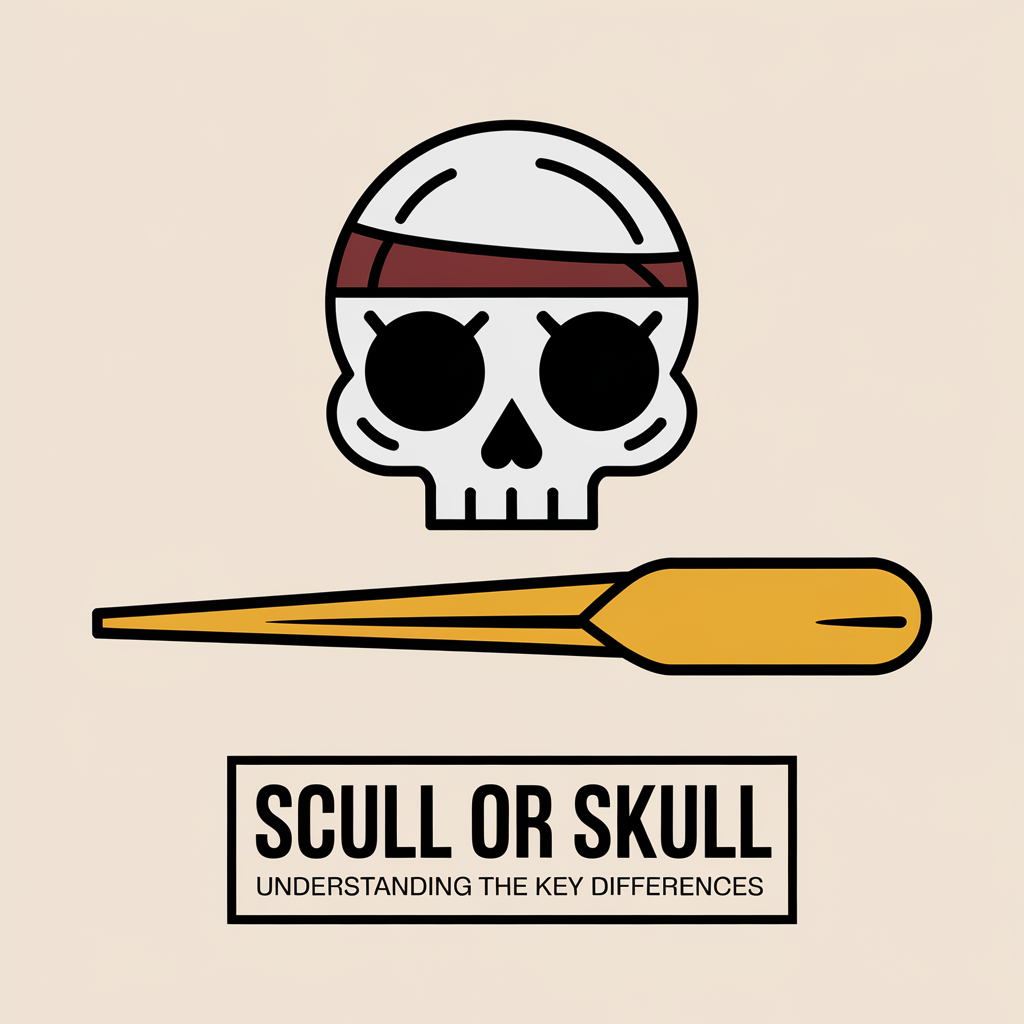Introduction
English homophones like “scull” and “skull” often cause confusion because they sound identical but have completely different meanings. One refers to a rowing technique, while the other is a crucial part of human anatomy. This guide will clarify their definitions, contexts, and differences, helping you use them correctly.
What Does “Scull” Mean?
The word “scull” comes from the Old Norse word skola, meaning “to wash or rinse.” Over time, it evolved to describe rowing techniques and equipment used to propel boats across water. Today, “scull” is closely associated with competitive rowing and recreational boating.
Sculling in Rowing
Sculling is a rowing technique where each rower uses two oars—one in each hand—to move a boat forward. This differs from sweep rowing, where each rower uses only one oar. Sculling requires balance, strength, and precision, making it a fundamental aspect of rowing competitions.
Types of Sculls:
- Single Scull: A boat for one person, commonly seen in solo races.
- Double Scull: Designed for two rowers, each with two oars.
- Quad Scull: A four-person boat where each rower sculls with two oars.
Usage Example:
“She trained extensively to master the sculling technique for the championship.”
Scull Navigation
Outside of sports, sculling is also used for small-scale water navigation in calm lakes and rivers. The precise control of sculls makes them ideal for recreational rowing and small transport vessels.
Read More About This article: Morning or Mourning: Understanding the Key Differences
What Does “Skull” Mean?
“Skull” refers to the bony structure that forms the head in vertebrates. It plays a vital role in protecting the brain and supporting facial features.
The Human Skull: Structure and Function
The human skull consists of 22 bones divided into two main sections:
- Cranium: Encases and protects the brain.
- Facial Bones: Shape the face and anchor muscles.
Functions of the Skull:
- Brain Protection: Acts as a shield against injuries.
- Facial Support: Provides structure for the eyes, nose, and jaw.
- Sensory Function: Houses organs responsible for sight, smell, and hearing.
Usage Example:
“Wearing a helmet is essential to protect the skull from injuries.”
Key Differences Between “Scull” and “Skull”
| Aspect | Scull | Skull |
|---|---|---|
| Definition | A rowing technique or oar | The bony structure forming the head |
| Context | Rowing, boating, and navigation | Anatomy, medicine, and biology |
| Purpose | Propelling boats on water | Protecting the brain and shaping the face |
| Pronunciation | Identical (/skʌl/) | Identical (/skʌl/) |
| Example Sentence | “He practiced his sculling technique on the river.” | “The human skull is essential for brain protection.” |
Why Do People Confuse “Scull” and “Skull”?
The primary reason for confusion is their identical pronunciation. Since they are homophones, their meanings must be inferred from context.
Common Mistakes & Corrections:
❌ “She injured her scull during the fall.”
✔️ “She injured her skull during the fall.”
❌ “The rower controlled the skull with ease.”
✔️ “The rower controlled the scull with ease.”
Tips to Remember the Difference
- Visual Association: Picture a boat and oars for “scull” and a head for “skull.”
- Mnemonic Device: “Scull glides; skull guards.”
- Practice Sentences: Use each term in context to reinforce proper usage.
Practical Importance of Using the Correct Word
Misusing “scull” and “skull” can lead to confusion, especially in professional discussions about rowing or anatomy. Precision in language ensures clear communication and credibility.
Case Study: A Public Misstep
A sports commentator once described a rower as “using the skull with precision,” leading to online ridicule. This highlights the importance of distinguishing between the terms, particularly in formal or public communication.
FAQs
🔹 What is the main difference between “scull” and “skull”?
“Scull” relates to rowing, while “skull” refers to the head’s bony structure.
🔹 Can “scull” and “skull” be used interchangeably?
No, they have entirely different meanings and contexts.
🔹 What are the key parts of the human skull?
The cranium (brain case) and facial bones, including the jaw and cheekbones.
Conclusion
While “scull” and “skull” sound the same, they belong to entirely different domains—one related to rowing and the other to anatomy. Understanding their meanings, contexts, and distinctions will help you avoid confusion and use them correctly in conversations. Whether you’re discussing rowing techniques or human anatomy, clarity in language is key.
